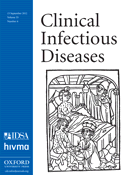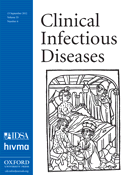
Cover image

On the cover: Treatment of a Syphilitic Couple with Mercury Balm, 15th century, Anonymous, French School, woodcut, Bibliotheque Nationale, Paris, France, The Bridgeman Art Library International. Reproduced with permission.
This earliest known medical illustration of patients suffering from syphilis, and identified as such, appears in the form of a print in a treatise on the disease, A Malafanzos morbo Gallorum, by Bartholomaüs Steber, which appeared in Vienna in 1498. The anonymous illustration shows a couple covered in pustules. It is stylistically typical of 15th-century depictions of interior scenes, with linear figures and objects on a tipped ground plane, with the inclusion of specific period details, such as the elaborate rolled hat. While one doctor examines a flask of urine, the other uses a spatula to apply what may be a mercury ointment to the male patient's leg. Near this time, a salve for this purpose may also have been made of gaiac (a wood imported from the Americas) or even arsenic.
Though syphilis has a much disputed origin, outbreaks tended to be named according to a custom of blaming the country from which it was presumed to have originated. The woodcut above calls this the "French disease." Around this time, other candidates for the disease source included the Americas, Spain, and Italy.
Historical accounts from this period indicate that the disease spread with a fury and intensity at the turn of the century until about 1520, settling thereafter into a weakened form. The venereal character was not always understood, however. Among the explanations other than coitus were astrological causes, a form of leprosy or plague, or a punishment for sin
(Mary & Michael Grizzard, Cover Art Editors)
Volume 55, Issue 6, 15 September 2012
NEWS
15 September News
IN THE LITERATURE
In the Literature
ARTICLES AND COMMENTARIES
An Outbreak of Shiga Toxin–Producing Escherichia coli O104:H4 Hemolytic Uremic Syndrome in Germany: Presentation and Short-term Outcome in Children
This is the first report on Shiga toxin–producing Escherichia coli hemolytic uremic syndrome (STEC-HUS) in children due to E. coli O104:H4 and the largest outbreak ever reported in detail in children. STEC-HUS due to E. coli O104:H4 is comparable to typical HUS in previous pediatric series.
Editorial Commentary: Escherichia coli O104:H4 and Hemolytic Uremic Syndrome: The Analysis Begins
Enterococcal Bacteremia Is Associated With Increased Risk of Mortality in Recipients of Allogeneic Hematopoietic Stem Cell Transplantation
Enterococcal bloodstream infections are associated with an increased risk of mortality during the first year after hematopoietic stem cell transplantation, especially in patients with vancomycin-resistant enterococci (VRE) strains. Colonization with VRE and delayed engraftment are significant risk factors for VRE bacteremia.
The Role of Asymptomatic Bacteriuria in Young Women With Recurrent Urinary Tract Infections: To Treat or Not to Treat?
The impact of the treatment of asymptomatic bacteriuria on the recurrence rate among young women affected by recurrent urinary tract infection is evaluated.
Editorial Commentary: Asymptomatic Bacteriuria—Shift of Paradigm
Concurrent Epidemics of Skin and Soft Tissue Infection and Bloodstream Infection Due to Community-Associated Methicillin-Resistant Staphylococcus aureus
The USA300 clone of methicillin-resistant Staphylococcus aureus causes concurrent epidemics of skin and soft tissue infections (SSTIs) and bloodstream infections (BSIs). Because USA300 SSTIs serve as a source for BSIs, strategies to control the USA300 SSTI epidemic may lessen the severity of the USA300 BSI epidemic.
Clinical Manifestations of Cryptococcus gattii Infection: Determinants of Neurological Sequelae and Death
Neurological disease, with or without lung infection, is common in sporadic Cryptococcus gattii infection (85%; raised intracranial pressure [42%]; hydrocephalus [30%]; neurological deficits [27%]). Immunocompromised patients had increased mortality risk. Cerebrospinal fluid cryptococcal antigen titers ≥256 predicted death and/or neurological sequelae in central nervous system infection.
Does the Piperacillin Minimum Inhibitory Concentration for Pseudomonas aeruginosa Influence Clinical Outcomes of Children With Pseudomonal Bacteremia?
The Clinical and Laboratory Standards Institute recently elected to lower the susceptibility breakpoint of piperacillin against Pseudomonas aeruginosa based largely on pharmacokinetic-pharmacodynamic modeling. We conducted a retrospective study to determine if lowering susceptibility breakpoints predicts improved clinical outcomes in children.
Costs of Healthcare- and Community-Associated Infections With Antimicrobial-Resistant Versus Antimicrobial-Susceptible Organisms
Antimicrobial resistance was associated with higher charges, length of stay, and death rates. The difference in estimates after accounting for death highlight divergent social and hospital incentives in reducing patient risk for antimicrobial-resistant infections.
Effect of Age and Vaccination With a Pneumococcal Conjugate Vaccine on the Density of Pneumococcal Nasopharyngeal Carriage
This study evaluated the impact of age and pneumococcal vaccination on the density of pneumococcal nasopharyngeal carriage. Among colonized individuals, density decreased with increasing age. Time-trends analysis revealed that pneumococcal vaccination appeared to lower the density of nasopharyngeal carriage.
A Single Dose of Vero Cell–Derived Japanese Encephalitis (JE) Vaccine (Ixiaro) Effectively Boosts Immunity in Travelers Primed With Mouse Brain–Derived JE Vaccines
The new Japanese encephalitis vaccine (JE-VC, Ixiaro) has replaced mouse brain–derived vaccines (JE-MB) associated with serious safety concerns. A single dose of JE-VC effectively boosted immunity in JE-MB–primed travelers. Current recommendations for booster vaccination should be reevaluated.
Editorial Commentary: Boosting Japanese Encephalitis Vaccine
Vaccine Administration Decision Making: The Case of Yellow Fever Vaccine
Targeted information about disease- and vaccine-risk is necessary but insufficient to change how providers make vaccine administration decisions. Providers need additional education to enable them to apply evidence, overcome cognitive decision-making errors and involve patients in vaccine decisions.
PHOTO QUIZ
An Unusual Periorbital Rash in a Child
INVITED ARTICLES
FOOD SAFETY
Foodborne Toxoplasmosis
Toxoplasmosis is a leading foodborne illness. Undercooked meat and soil contaminated with cat feces are the major sources of infection. Reduction of Toxoplasma gondii in meat, proper food preparation practices, and reduction of environmental contamination can help prevent toxoplasmosis.
HEALTHCARE EPIDEMIOLOGY
Carbapenem-Resistant Enterobacteriaceae: An Emerging Problem in Children
Carbapenem-resistant Enterobacteriaceae (CRE) are widespread and of global concern. CRE data in children are sparse though incidence may be increasing owing to efficient bacterial spread and mobile genetic resistance elements. This review summarizes available data on CRE in the pediatric population.
REVIEWS OF ANTI-INFECTIVE AGENTS
Etiology and Pharmacologic Management of Noninfectious Diarrhea in HIV-Infected Individuals in the Highly Active Antiretroviral Therapy Era
Human immunodeficiency virus (HIV)–associated diarrhea remains common despite the use of highly active antiretroviral therapy (HAART) and may be caused by noninfectious mechanisms, such as HAART-related adverse events and HIV enteropathy. Newer therapies targeting these noninfectious causes of diarrhea are needed.
HIV/AIDS
Improved Neuropsychological and Neurological Functioning Across Three Antiretroviral Regimens in Diverse Resource-Limited Settings: AIDS Clinical Trials Group Study A5199, the International Neurological Study
ACTG A5199 compared the neuropsychological effects of 3 antiretroviral regimens in 860 human immunodeficiency virus–positive participants from Brazil, India, Malawi, Peru, South Africa, Thailand, and Zimbabwe. Treatment with either of the World Health Organization–recommended first-line regimens improved neurological and neuropsychological functioning.
The Effect of Prenatal Highly Active Antiretroviral Therapy on the Transmission of Congenital and Perinatal/Early Postnatal Cytomegalovirus Among HIV-Infected and HIV-Exposed Infants
Among 414 infants born to human immunodeficiency virus–infected women, congenital cytomegalovirus (CMV) rates did not change from the pre–highly active antiretroviral therapy (HAART) era (1988–1996) to the post-HAART era (1997–2002). Rates of perinatal/early postnatal CMV decreased, however (from 17.9% to 8.9%), as did the occurrence of CMV-related clinical symptoms.
ANSWER TO THE PHOTO QUIZ
An Unusual Periorbital Rash in a Child
CORRESPONDENCE
Early-Onset Liver Fibrosis Due to Primary Hepatitis C Virus Infection Is Higher Over Time in HIV-Infected Men
Reply to Fierer et al
Unsettled Issues of Zostavax Vaccine
Far-reaching Conclusions Based on Weak and Missing Data
Reply to Arroyo
Selection Bias in Andes et al
Reply to Anaissie and Nucci and to Cisneros et al
ELECTRONIC ARTICLES
Recent Introduction and Rapid Dissemination of Chikungunya Virus and Dengue Virus Serotype 2 Associated With Human and Mosquito Coinfections in Gabon, Central Africa
Since the Libreville outbreak in 2007, Chikungunya virus and dengue virus serotype 2 have continued to spread throughout Gabon. We prospectively studied 4287 acute febrile cases, of which 1943 were virologically confirmed, and we documented coinfections in human and mosquito.
Severe Morbidity Due to Opisthorchis viverrini and Schistosoma mekongi Infection in Lao People's Democratic Republic
We assessed morbidity due to Opisthorchis viverrini and Schistosoma mekongi infections in 243 individuals in Lao People's Democratic Republic. Morbidity was associated with O. viverrini infection intensity. Coinfection with S. mekongi resulted in excess risk of liver fibrosis and left liver lobe enlargement. The high public health impact of opisthorchiasis warrants control.



